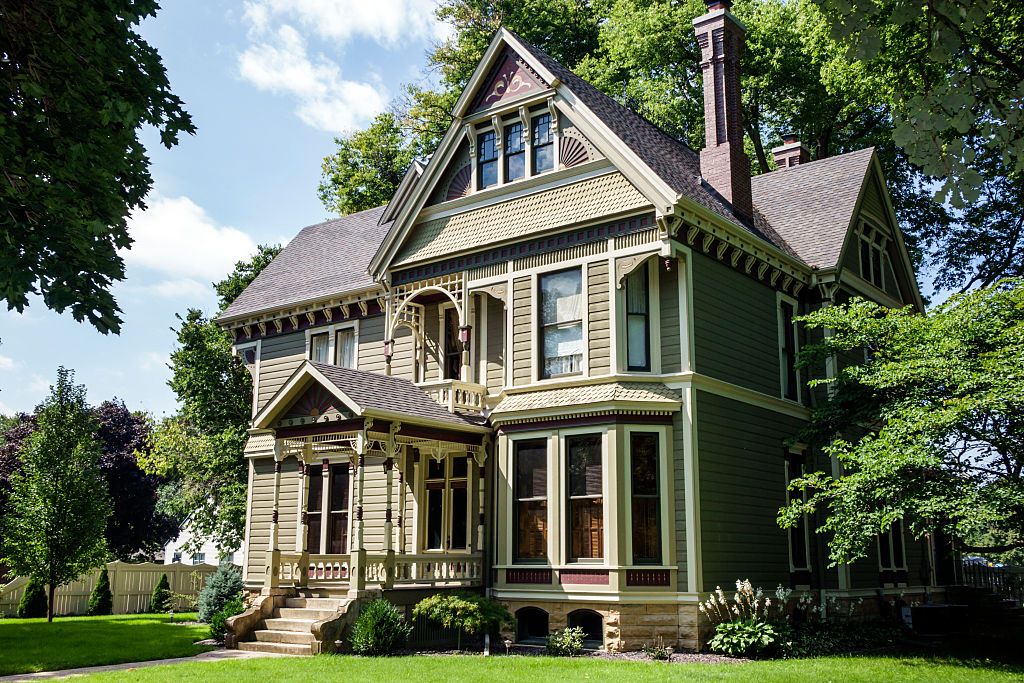Victorian-style houses are among the most beloved and recognizable architectural designs in history. Known for their intricate detailing, steep roofs, vibrant colors, and decorative elements, these homes are a visual reminder of a bygone era where craftsmanship and artistry were paramount. Though their heyday occurred during the reign of Queen Victoria (1837-1901), Victorian-style houses continue to captivate homeowners, architects, and historians alike.
In this comprehensive guide, we will delve into the history, architectural features, types, and modern interpretations of Victorian-style houses, exploring why they remain a timeless symbol of elegance and grandeur.
1. The Historical Context of Victorian-Style Houses
Victorian architecture flourished during the 19th century, particularly in the United Kingdom and the United States, during the reign of Queen Victoria. This period saw rapid industrialization and urbanization, which led to significant changes in the way homes were designed and built.
The Victorian era coincided with advances in technology, such as the introduction of mass-produced building materials. As a result, ornate designs, previously reserved for the wealthy, became more accessible. Middle-class homeowners could now afford intricately detailed homes that reflected their newfound status. The growing population in urban centers like London and New York also fueled the demand for housing, further driving the Victorian housing boom.
Victorian homes were influenced by a variety of earlier architectural styles, including Gothic, Italianate, and Romanesque. As a result, they exhibit a rich mixture of design elements, often characterized by an eclectic approach to form and decoration. It is not uncommon to see several different styles combined in a single Victorian house.
2. Architectural Features of Victorian Houses
Victorian homes are known for their distinctive features, which set them apart from other architectural styles. Let’s explore some of the key characteristics that define this iconic design.
2.1 Asymmetry
One of the most noticeable features of Victorian-style homes is their asymmetry. Unlike earlier architectural styles that favored symmetry and balance, Victorian homes often have irregular shapes with varying rooflines, multiple gables, and bay windows. The overall effect is one of complexity and charm, with no two homes looking exactly alike.
2.2 Steep Roofs and Gables
Victorian houses are typically characterized by steep, pitched roofs and gables. These roofs not only add to the overall aesthetic appeal but also served practical purposes during the Victorian era, particularly in colder climates. The steep pitch allowed snow and rain to slide off the roof easily, preventing the buildup of moisture that could damage the home.
2.3 Decorative Trim (Gingerbread)
One of the hallmarks of Victorian-style homes is the abundance of decorative trim, often referred to as “gingerbread.” This intricate woodwork can be found on gables, porches, and eaves, giving the home a highly ornate and detailed appearance. These decorative elements are often hand-carved, though advances in technology during the Victorian era made mass production possible.
2.4 Bay Windows
Bay windows are another common feature of Victorian homes. These large, protruding windows create a sense of depth and allow natural light to flood into the home. Bay windows were often used in combination with stained glass, adding a colorful and artistic element to the exterior.
2.5 Towers and Turrets
Many Victorian homes feature towers or turrets, which give them a castle-like appearance. These vertical elements add a sense of grandeur and drama to the overall design. Turrets are often cylindrical, with conical roofs, while towers may have more angular shapes.
2.6 Vibrant Colors
Unlike the subdued color palettes of earlier architectural styles, Victorian homes were often painted in vibrant, bold colors. Homeowners would choose multiple contrasting hues to highlight different architectural features, such as the trim, gables, and windows. Popular colors included deep reds, greens, blues, and golds. Today, many Victorian homes are still celebrated for their colorful and playful exteriors.
2.7 Ornate Interiors
The interior of a Victorian-style house is just as intricate and detailed as the exterior. Common interior features include high ceilings, elaborate moldings, and decorative fireplaces. Rooms were often divided by pocket doors or archways, with rich wallpapers, textiles, and furnishings that reflected the Victorian penchant for opulence.
3. Types of Victorian Houses
The term “Victorian” encompasses a variety of different architectural styles, each with its own unique characteristics. Let’s take a look at some of the most popular types of Victorian-style houses.
3.1 Gothic Revival
Gothic Revival Victorian homes are characterized by pointed arches, steep gables, and intricate wooden trim. These homes often have a medieval or cathedral-like appearance, with elements borrowed from Gothic architecture, such as lancet windows and decorative finials.
3.2 Italianate
Italianate Victorian homes were inspired by the villas of Italy. These homes typically feature low-pitched or flat roofs, wide eaves with decorative brackets, and tall, narrow windows. Italianate homes often have cupolas or towers, adding to their Mediterranean-inspired look.
3.3 Queen Anne
Queen Anne is perhaps the most iconic of the Victorian styles. These homes are known for their asymmetrical shapes, turrets, and elaborate detailing. Queen Anne homes often have wraparound porches, bay windows, and a mix of textures, such as brick, wood, and stone. The use of vibrant, contrasting colors is a hallmark of Queen Anne architecture.
3.4 Second Empire
Second Empire Victorian homes are easily recognizable by their Mansard roofs, which have a steep slope on one side and a flat top. This style was influenced by French architecture and became popular in the United States during the mid-19th century. Second Empire homes often have elaborate cornices and dormer windows, adding to their stately appearance.
3.5 Stick Style
Stick Style Victorian homes emphasize the structural framework of the house, with decorative wooden beams and trusses that are visible on the exterior. These homes often have steeply pitched roofs and overhanging eaves, giving them a rustic and almost barn-like appearance.
4. Victorian Homes in the Modern Era
Though the Victorian era ended over a century ago, Victorian-style homes continue to be a popular choice for homeowners and architects today. Many original Victorian houses have been lovingly restored, with attention paid to preserving their historical details while incorporating modern amenities.
4.1 Restoration and Preservation
Restoring a Victorian home can be a labor of love. Many of these homes have fallen into disrepair over the years, requiring significant work to bring them back to their former glory. Homeowners and preservationists often go to great lengths to ensure that original features, such as woodwork, stained glass, and fireplaces, are retained.
4.2 Modern Interpretations of Victorian Design
While many Victorian homes are historical treasures, there is also a growing trend of building new homes that incorporate Victorian design elements. Modern interpretations of Victorian architecture often combine traditional features, such as bay windows and gables, with contemporary materials and floor plans. These homes offer the charm and character of a Victorian house with the convenience and energy efficiency of modern construction.
4.3 Victorian Houses in Popular Culture
Victorian houses have also made their mark in popular culture. They are often featured in movies and television shows, where their ornate exteriors and atmospheric interiors create a dramatic backdrop. From haunted house tales to romantic period dramas, Victorian homes have become an enduring symbol of mystery and grandeur.
5. The Appeal of Victorian-Style Homes
So, what is it about Victorian-style houses that continues to captivate people more than a century after they were built? For many, it’s the combination of history, craftsmanship, and aesthetic beauty. These homes offer a glimpse into a time when architecture was not only about functionality but also about creating art.
Victorian homes evoke a sense of nostalgia for a bygone era, where attention to detail and ornamentation were valued. For homeowners who appreciate historic preservation and unique architectural features, a Victorian house offers a perfect blend of elegance and character.
Conclusion
Victorian-style houses are more than just buildings; they are architectural masterpieces that have stood the test of time. With their intricate detailing, vibrant colors, and distinctive features, Victorian homes continue to inspire admiration and fascination. Whether you are restoring an original Victorian house or building a modern interpretation, the timeless beauty of this architectural style is undeniable.

